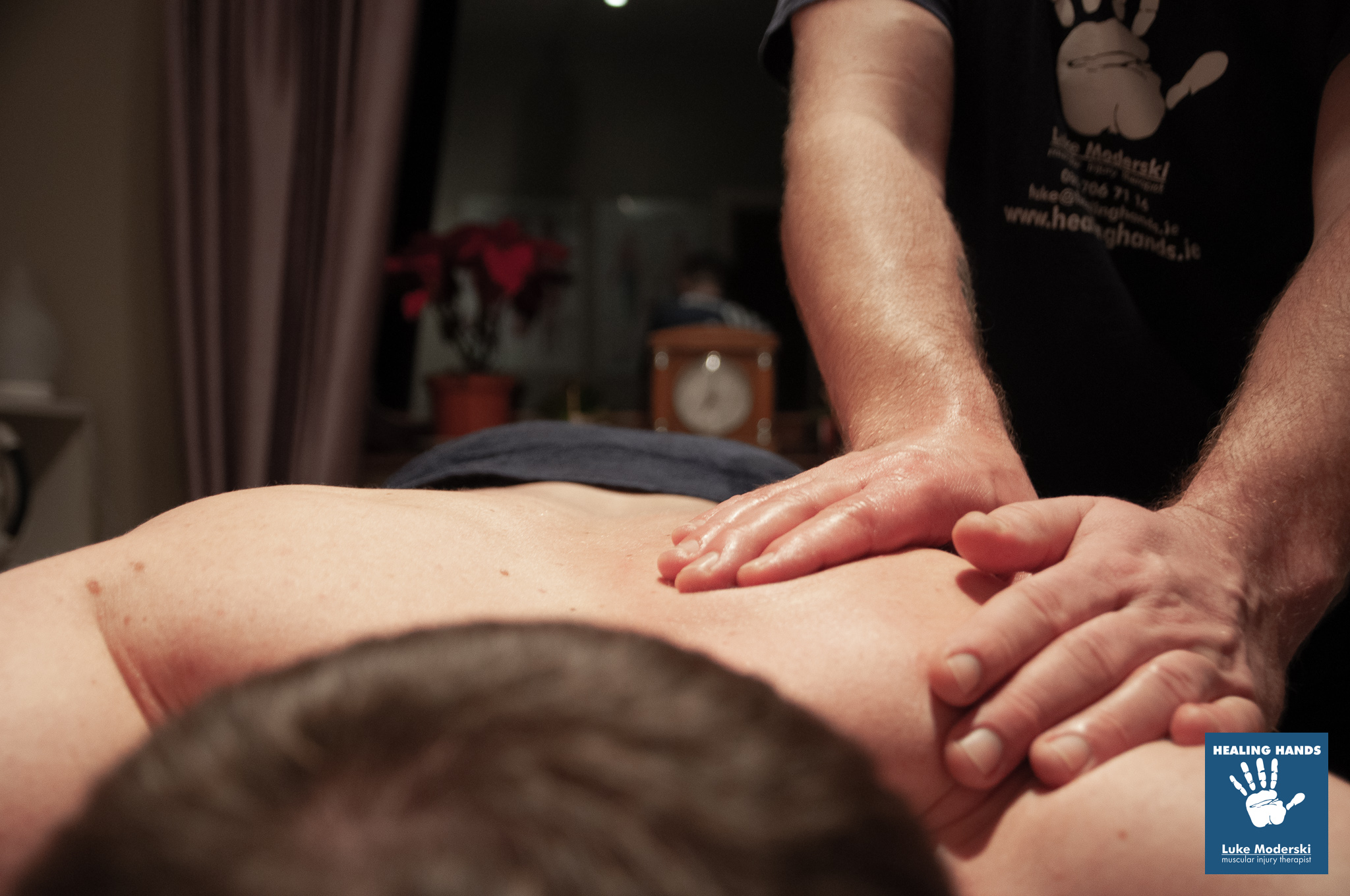- Email us : info@healinghands.ie
- Call us : 0857067116

Sports massage is manual manipulation of the muscles geared specifically toward helping people who have physically demanding lifestyles and/or hobbies. This kind of therapeutic massage considers the impact of certain activities on specific joints, muscle groups, tendons, ligaments, and soft tissue groups. The conscious focus of sports massage therapy maximizes the benefit of certain massage techniques and supports further physical exertion and activity. An initial assessment is used to create a specially informed massage therapy plan that will meet each individual athlete’s specific needs.
Sports massage is a generic term for three different types of massage associated with athletic performance. Each type of massage has its own benefits and uses different techniques.
Pre-event sports massage is done to help prevent serious athletic injury. It helps to warm up the muscles, stretching them and making them flexible for optimal athletic performance. A pre-event massage stimulates the flow of blood and nutrients to the muscles, reduces muscle tension, loosens the muscles, and produces a feeling of psychological readiness.
Whenever athletes exercise heavily, their muscles suffer microtraumas. Small amounts of swelling occur in the muscle because of tiny tears. Post-event sports massage helps reduce the swelling caused by microtraumas; loosens tired, stiff muscles; helps maintain flexibility; promotes blood flow to the muscle to remove lactic acid and waste build-up; and reduces cramping. In addition, post-event massage helps speed the athlete's recovery time and alleviates pulls, strains, and soreness.
Maintenance sports massage is done at least once a week as a regular part of athletic training programs, although professional athletes who have their own massage therapists may have maintenance massage daily. Maintenance massage increases the flow of blood and nutrients to the muscles. It also keeps the tissues loose so that different layers of muscle slide easily over each other. Maintenance sports massage also helps reduce the development of scar tissue while increasing flexibility and range of motion.
Conditions that generally respond well to massage as a complementary therapy include: